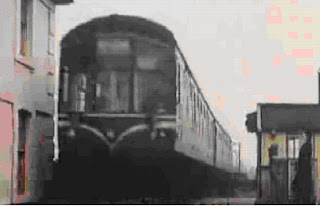About a year ago I recounted a true story about the pitfalls of owning a robotic floor cleaner in a house with a dog. It was only recently that I had occasion to meet up again with the person who had told me this story, my G.P. As I departed his surgery I happened to remark that if he had any more amusing dog stories he should let me know. Imagine my surprise when the next day, after my wife nipped into the surgery for a repeat prescription, the doctor called her in to recount the following rather sad doggy tale he’d been told.
A close friend of my GP had, after retiring as a doctor, been living abroad for several years in a small flat within an apartment building in Rumania. She was friends with a British couple in a village nearby whom she regularly visited. They owned an affectionate bulldog called Dexter, to whom she was equally devoted. Whenever her friends went abroad on holiday or came back to visit family in the UK UK UK
She decided she would have to take Dexter there herself but as discretely as possible. In order to get him out of the flat she decided the only way she could do this was by putting his body in a large brown suitcase she kept on top of a wardrobe. As a doctor she coped with this chore with less difficulty than many others might have done. Getting the suitcase out of the apartment prooved more problematic as the lift in her apartment block was not working and she found herself having to lug the heavy suitcase down four flights of stairs.
She was quite relieved therefore, when a young man appeared in the stairwell and she decided to ask for his assistance. As he carried the suitcase for her, he remarked that it was very heavy and asked what she had inside. To avoid the embarrassment of explaining the true contents, she said that the suitcase contained an old computer and some software. At this the man suddenly gathered up the suitcase and ran off with it, out of the building and down the road never to be seen again. The woman was left dumbfounded when she realized what had happened and wondered how she was she going to break the news to Dexter’s owners. She decided, rightly or wrongly, that losing their beloved pet would be upsetting enough never mind having to explain that his body had been stolen. She decided that the best thing she could do was to find another old suitcase which she put in the bottom of the grave filled with some old magazines and books so that when the gardener popped back to fill in the hole he wouldnt inadvertently discover an empty suitcase where there should be a full one. Everything went to plan and not long after they returned from their trip all three friends gathered beneath the apple tree to say their farewells to Dexter. As far as my GP knew his old friend never let on what had really happened to Dexter. We can only imagine the shock that the suitcase thief got when he came to open the suitcase to examine his ill-gotten gains.











